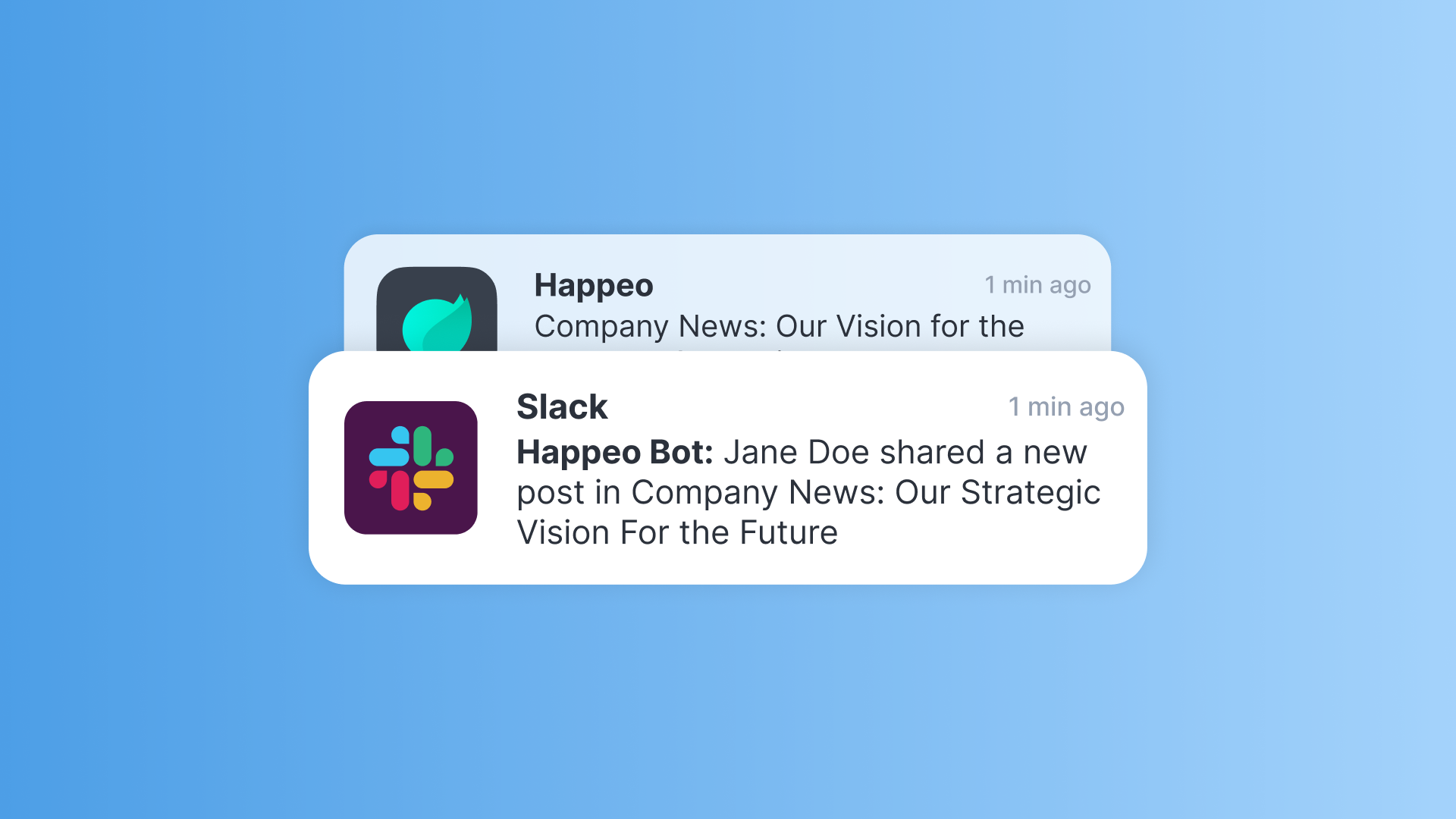

Jonathan Davies
21 mins read
Start building your digital home with Happeo
Request a demoThe bigger the organization, the greater the knowledge – and the more need for knowledge management software.
Business expansion comes with more employees, more documentation, more slide decks, and more customers.
That’s the good news.
The bad news?
The growth process can be chaotic as companies try to organize their information and resources. And that’s where knowledge management tools can help.
Not sure how to navigate the world of knowledge management tools and choose the best one for your organization?
In this post, we’ll explain what knowledge management tools are, and how to use them, and we’ll take a look at the best knowledge management platforms. Keep reading to learn more.
What is a knowledge management tool?
A knowledge management tool stores information, keeps it organized, and allows users to search and interact with it. Organizations use them to share information both externally and internally. A knowledge management tool can also work as a learning management tool, a customer relationship management tool, or simply a knowledge base.
Why are more companies investing in knowledge management software?
Business leaders realize that as they grow, knowledge will, too. Ensuring that you have a knowledge sharing culture and system in place can improve your teams’ performance and productivity.
According to a McKinsey Global Institute Report, implementing a knowledge management system can reduce the time spent searching for information by 35% and boost organization-wide productivity by 20-25%. To organize information and keep processes running smoothly, businesses use knowledge management systems to:
- Centralize content so that important information is easily available to all employees
- Prevent information silos by ensuring that the entire organization has access to the same and most up-to-date information
- Facilitate real-time collaboration to boost productivity and idea generation
- Maintain communication flow within the organization
- Improve security for business critical docs and intellectual property with access control
- Optimize the employee onboarding and training time with easy knowledge sharing
A company that has knowledge transparency across the entire organization ensures that everyone is working with the same information and toward the same goal.
How to choose the best knowledge management software
Following are some points to consider when choosing a knowledge management platform.
Ease-of-use
If your employees don’t find it easy to work with a digital tool, they will be reluctant to use it. Hence, you will not see the positive impact of implementing this tool.
Make sure that the knowledge management tool you choose is user-friendly and doesn’t require extensive training. Easy employee onboarding saves everyone time.
Feature set
Here are the features to look for when choosing a knowledge management tool:
1. Document management
Digital document management refers to how the software stores files (e.g., it keeps track of document versions and who made changes). This feature helps provide an audit trail for all your documents.
2. Knowledge base
Knowledge bases are computer systems that contain structured and unstructured information. You can use them to store your business documentation — processes, tutorials, and content archives, for example.
3. Centralized knowledge source
One of the most important functions of knowledge management software is to securely contain your company knowledge and make it accessible (to all the right people). Employees should know where to look for information and be confident that the documents they find are current.
4. Search functionality
The search functionality helps employees find the information they’re looking for. To do that, a search function has to be able to crawl through the knowledge management system, email digest, and other third-party tools, to deliver any result that could be related to the information people are seeking.
5. Collaboration capabilities
A good knowledge management tool allows users to share, exchange, and interact with documents. This makes collaborative work and communication easier, as different people and teams can reduce back-and-forths and be more efficient.
Collaboration features create a system of interconnected apps and help you avoid using redundant tools. They also make human error less likely, save your team tremendous amounts of time, and increase data security.
6. Communication channels
Good knowledge management systems also function as communication hubs. Hence, they have both static and dynamic communication options that enable efficient knowledge sharing.
Static communication is unilateral, whereas dynamic communication allows people to actively propose feedback and insights.
7. Lifecycle management
A lifecycle management feature notifies you when it’s time to update content and automatically archives outdated content.
8. Content and user analytics
Content and user analytics allow you to gain insight into:
- The most viewed pages and channels
- The most engaging posts
- The MVP of content contributors
- The most-searched-for keywords
Leadership can use this information to understand what and how employees are searching, as well as what content or features will help them boost engagement.
9. Pricing
Your knowledge management tool needs to fit within your budget – both in terms of costs of purchase and ongoing maintenance.
Knowledge management tools usually offer different pricing packages, which include different features and add-ons. Pricing can also depend on the number of users.
10. Security
When you’re working with all kinds of information — blog posts, customer data, contracts, and policy documents — you need a way to protect that content. The best knowledge management systems offer enhanced security features, such as:
- Secure cloud-based storage
- ISO 27001 certification
- GDPR compliance
- SAML authentication to enable the use of SSO (Single Sign-On)
- Data minimization
11. Integrations
If your company already works with third-party tools, you don’t have to replace them just because you invested in new knowledge management software. Integration features (such as the availability of an API) can help you connect your new knowledge management tool with other software applications you use.
Will your knowledge management system integrate with the tool(s) you use every day? If so, are these integrations seamless? Or do you have to install add-ons?
15 best knowledge management tools for 2024
We searched for the knowledge management tools that we believe offer the best features. Here’s what we found:
Happeo

Best for: Knowledge base, internal communications, document management
Notable customers: Randstad Sourceright, Decathlon, Doctolib, State Auto, OneGoal, Trimble, Mint Dentistry
Happeo is a social intranet and a knowledge management tool that combines collaboration, communication, and a knowledge base in one system. It integrates seamlessly with Microsoft 365, Google Workspace, and the third-party tools your company already uses.
Happeo improves knowledge management while stimulating productivity. You can easily attach Google Drive or OneDrive documents to Channel posts, and then share them directly in Slack or Teams.
Key knowledge management features:
- Universal Search to browse throughout the entire platform, but also through your email or files in Google Workspace and Microsoft 365
- Federated Search for searching across all company tools and databases
- Intranet Pages to host static communication
- Intranet Channels for posting, commenting on, and engaging in conversations
- Lifecycle Management to archive outdated content or remind you to update it
- Google Workspace and Microsoft 365 integration to make collaboration seamless
- Templates for blogs, news, or any type of content to publish in Channels
- Analytics to report on the metrics that matter
- Rights Management to make sure the right people have access to the right content
- Custom Branding to keep the experience cohesive and consistent for employees
Pricing: Happeo has three pricing plans – “Essential,” “Recommended,” and “Custom.” The pricing depends on the number of users, as well as the add-ons and features you choose.

“Our onboarding experience has greatly improved thanks to Happeo’s Pages. Instead of having a quick meeting and sending out slides to new employees, we now have an entire page they can easily refer to.”
Calene Horton
People Operations Manager
Document 360
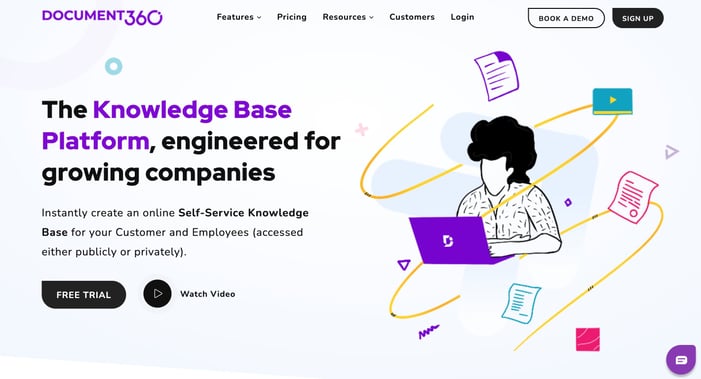
Best for: Knowledge base
Notable customers: Virgin Red, Whatfix, LightBox, Bluescape, AlgoSec, Singlify, Sweeten, AutoRABIT, Microgaming
Document 360 is a tool that enables organizations to create public and private self-service bases for both users and customers. Their knowledge base allows people to create, publish, and manage articles.
Key knowledge management features:
- Knowledge base site
- Knowledge base portal
- Knowledge base assistant
- Platform API for reading and writing in the knowledge base
Pricing: Document360 offers four pricing packages
- Free – $0/project/month
- Startup – $99/project/month
- Business – $249/project/month
- Enterprise – $499/project/month

“The ability to quickly communicate and scale collaboration is second to none. Happeo users across the globe can receive information, connect and collaborate in real time – answer questions quickly and publicly to avoid duplicative emails.”
Molly Quinn
Director of Marketing and Communications
Confluence
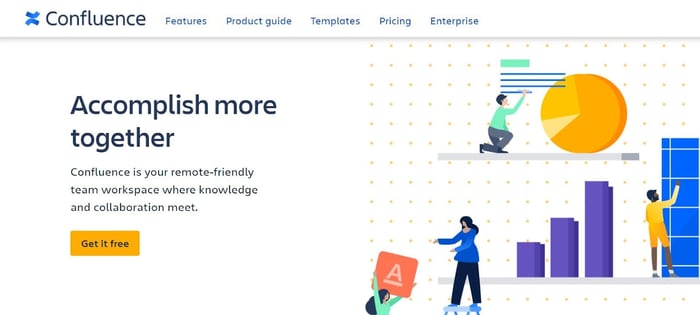
Best for: Document management, knowledge base
Notable customers: Blend, HubSpot, Audi, Twilio, LinkedIn, The New York Times, NASA, Illumina, Docker, Morningstar, GoPro
Confluence is a wiki software businesses useas a digital workspace for teams to exchange knowledge. It’s a knowledge base for storing, sharing, and reviewing information, as well as providing feedback. Confluence allows third-party integrations and some add-ons and can search files. Users can produce new “topics” by putting files into the wiki.
Key knowledge management features:
- Search functionality
- Topic searches
- Document management
- “Best practice” templates
Pricing: Confluence has four pricing packages
- Free
- Standard – $5.75/user
- Premium – $11/user
- Enterprise pricing available upon request
Tettra
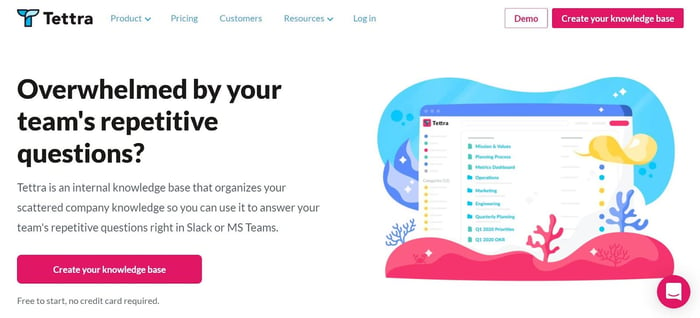
Best for: Knowledge base, document management
Notable customers: Recteq, Everyday Speech, Techstars, Basis 365 Accounting, SmartBug
Tettra is a knowledge base that organizes enterprise knowledge so employees can reach it quickly and easily. What makes Tettra special is its Slack wiki, which makes it possible to answer questions in Slack by using Tettra’s knowledge base. The seamless Slack integration allows users to search, save, and share Tettra pages in chats.
Key knowledge management features:
- Content verification
- Page and update request
- Content suggestions
- Editor
- Search functionality
- Content export
Pricing: Tettra offers three pricing packages
- Starting – free, for up to 10 users
- Scaling – $8.33/user/month, for up to 250 users
- Enterprise – $16.66/user/month
SharePoint
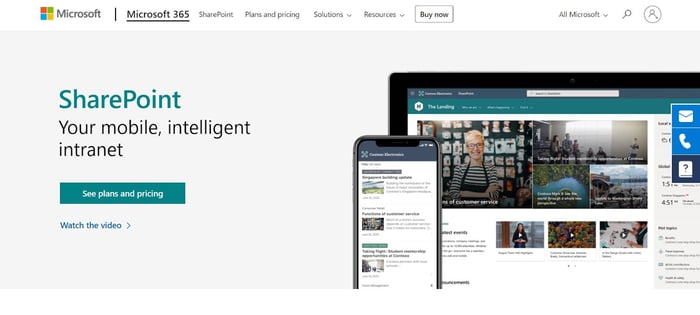
Best for: Knowledge base, document management for large teams
Notable customers: NASCAR, Goodyear, M&S, Hershey, Qantas, Coles
The ancestor of intranets and knowledge management tools, SharePoint is a digital tool for employees to search for, upload, and share files. The platform links the user to shared documents or spaces like Teams or Microsoft 365, keeping enterprise knowledge in one place.
Key knowledge management features:
- Search functionality
- Content analytics
- File storage and sharing
- Knowledge wiki
Pricing: You can choose from three different options that automatically renew annually
- SharePoint Online (Plan 1) – $5/user/month
- SharePoint Online (Plan 2) – $10/user/month
- Office 365 E3 at $23/user/month
Helpjuice
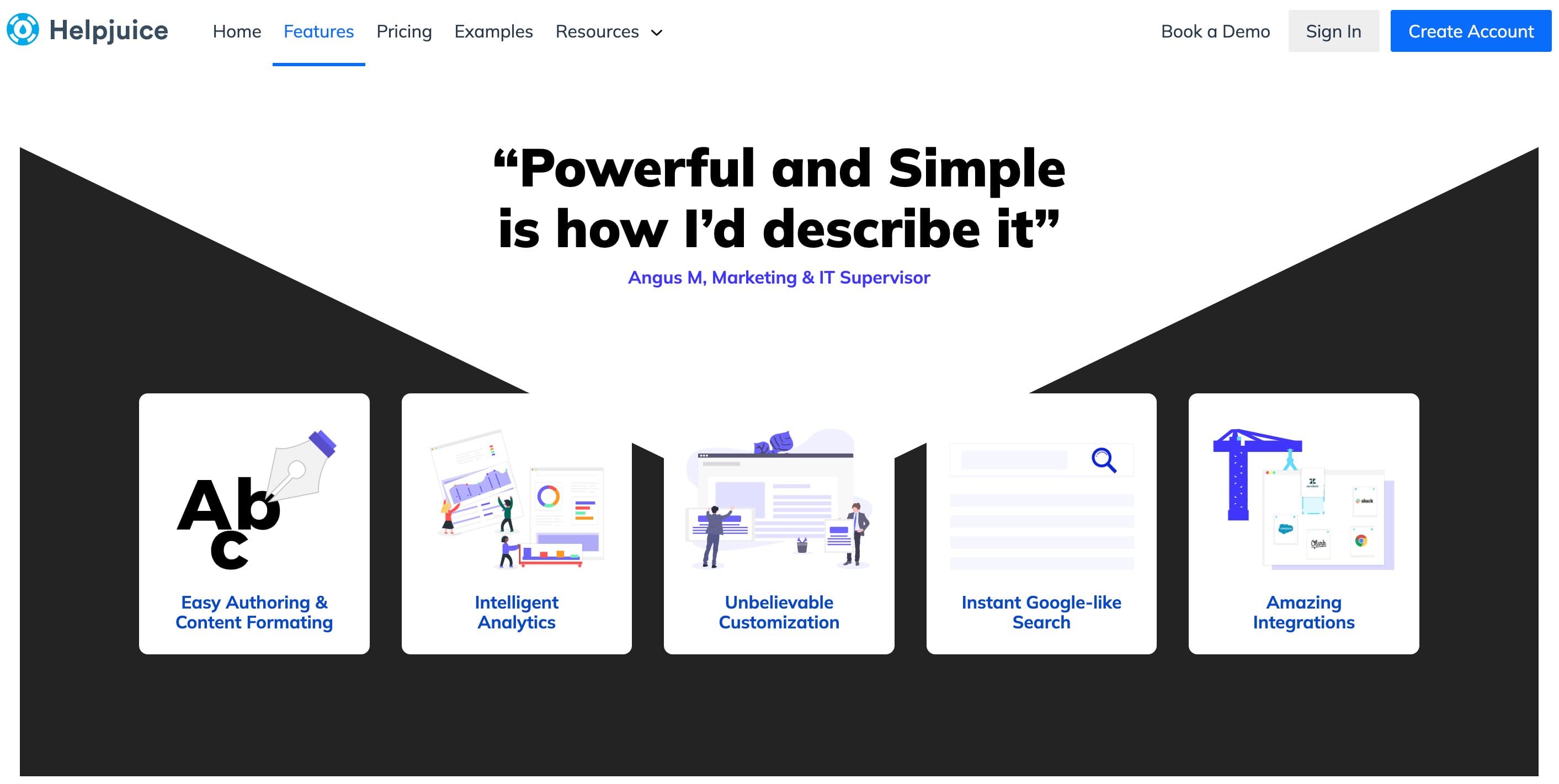
Best for: Document management
Notable customers: Amazon, Glovo, World Health Organization, TCL, Virgin Mobile, Viking, Hertz, Vacasa, Upstart
Helpjuice is a cloud-based knowledge management tool. What’s interesting about this software is that it can create and manage knowledge bases both internally and externally. Businesses of all sizes use Helpjuice as a knowledge base, as well as to enhance their collaborative culture and customer support.
Key knowledge management features:
- Authoring and content formatting
- Analytics
- Search functionality
- Knowledge base
Pricing: Helpjuice has four pricing packages, each of them with a free two-week trial period
- Starter – $120/month, for up to 4 users
- Run-up – $200/month, for up to 16 users
- Premium Limited – $289/month, for up to 60 users
- Premium Unlimited – $499/month
ProProfs
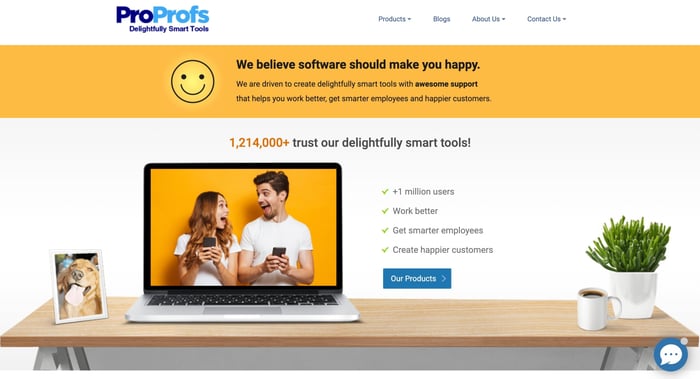
Best for: Learning management
Notable customers: Adobe, Cisco, University of Phoenix, United Nations, Sony, Ford, Dell, Nestle, American Red Cross, Shell
ProProfs is a digital tool made for quizzes and training. Its analytics report quiz results to the creator so they can see how the learning process is scaling. This tool helps users create wikis, manuals, and documentation, and allows users to create a knowledge base easily.
Key knowledge management features:
- Training maker
- Knowledge base
- Quiz maker
- Survey maker
Pricing: ProProfs offers four price plans
- Free
- Essentials – $20/month
- Business – $40/month
- Business+ – $200/month
Zendesk
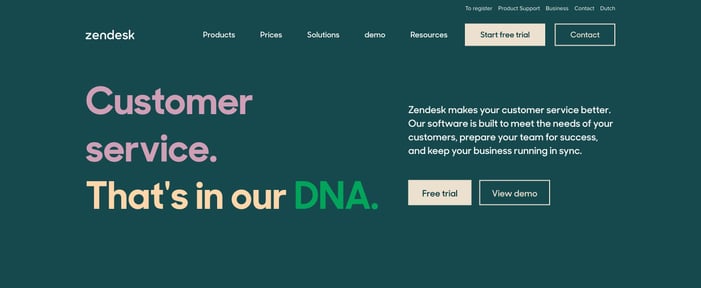
Best for: Customer support and sales
Notable customers: Mailchimp, Siemens, Stanley Black & Decker, Tesco, Khan Academy, Uber
Zendesk is a CRM tool designed to scale customer relationships. The platform improves sales and customer communications by streamlining support with features like automations, triggers, and cross-platform chat. It’s built with the end-user in mind, so it’s easy to use for both customers and support agents.
Key knowledge management features:
- Search functionality
- Real-time updates
- Agent collaboration
- Help desk automation
Pricing: Zendesk offers two different services.
Zendesk for service:
- Suite team: $49/user/month
- Suite growth: $79/user/month
- Suite professional: $99/user/month
Zendesk for sales:
- Sell team: $19/user/month
- Sell Professional: $49/user/month
- Sell Enterprise: $99/user/month
HelpCrunch
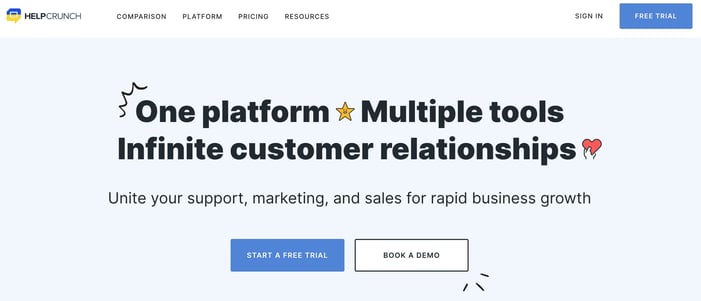
Best for: Customer support
Notable brands: Statcounter, SE Ranking, European Sperm Bank, Halebop Locall, Fitlap, Revenue Grid
HelpCrunch is a customer communication platform that combines help desk, live chat, knowledge base, and marketing automation. It maintains the customer lifecycle from the point of conversion and helps organizations retain customers and drive sales.
Key knowledge management features:
- Knowledge base
- Third-party integrations
- Help desk
Pricing: HelpCrunch offers three pricing packages
- Basic – $12/user/month
- Pro – $20/user/month
- Unlimited – $495/month (unlimited users)
Bit.ai
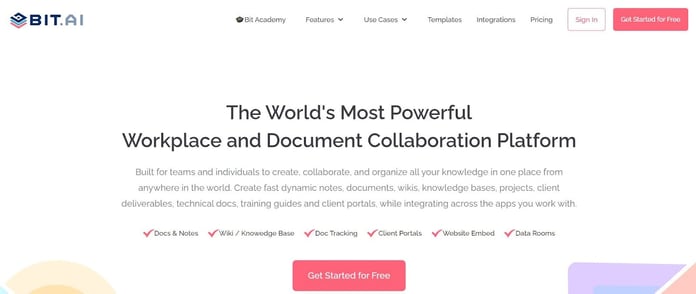
Best for: Document management
Notable customers: New Zealand Post, Canon, Massachusetts Institute of Technology, Harvard University, Georgetown University, University of Michigan, The New York Stem Cell Foundation
Bit.ai is a document collaboration platform that brings document creation and management in one place. Our favorite thing about their platform? Every company, department, and team has its own unique set of digital tools, files, and web resources that they use.
Key knowledge management features:
- Wiki/knowledge base
- Content library
- Content control
- Search functionality
- Document editor access
Pricing:
Similar to most knowledge management tools on this list, Bit.ai comes in four different packages:
- Free plan – for up to 5 users
- Standard – $8/user/month
- Business plan – $15/user/month
- Enterprise pricing available upon request; comes with a personalized plan for team deployment
SABIO
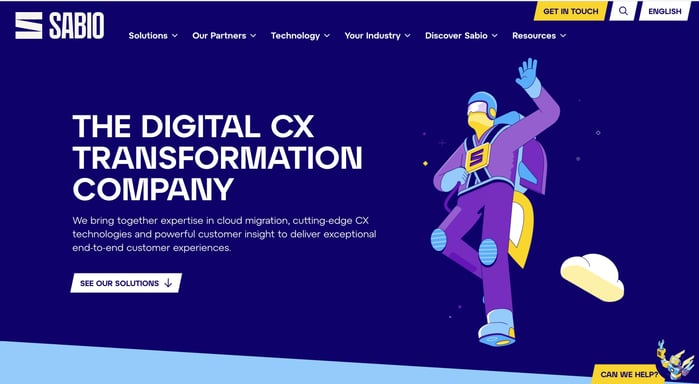
Best for: Knowledge base
Notable customers: DPD, Commerzbank, Weleda, IONOS by 1&1, Deutsche Bahn
SABIO is a knowledge sharing tool specifically for customer service organizations. The software enables teams to collaborate efficiently and provides each customer service employee with the knowledge of all departments.
Key knowledge management features:
- Self-learning search
- Search ranking
- Search filters
- Multiple upload file formats (Word, Excel, PowerPoint, PDF)
Pricing: SABIO has three pricing packages
- SABIO team for $8.70user/month including free trial
- SABIO business $13.04/user/month including free trial
- SABIO enterprise – pricing available on request
Bloomfire

Best for: Knowledge base
Notable customers: Conagra, Orvis, Insperity, Jackson Hewitt, DraftKings, Ogilvy, Vrbo
Bloomfire is a knowledge management system that organizes information to break down silos and make companies more efficient. Its knowledge sharing tool supports social learning, customer service, and sales and marketing alignment.
Key knowledge management features:
- AI-powered search
- Publish text, charts, images, audio, and video
- Personalized feed
- Analytics
Pricing: Bloomfire pricing begins at $25/user.
Notion
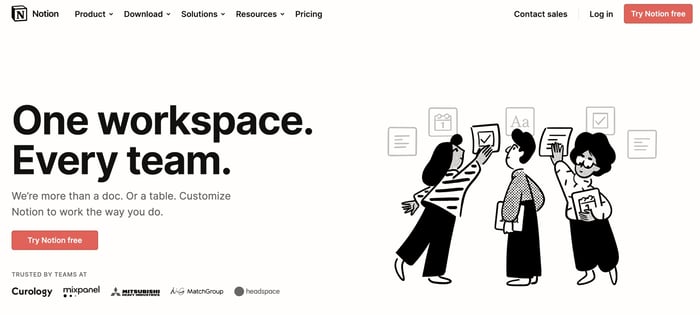
Best for: Document management, knowledge base
Notable customers: Pixar, TravelPerk, Cornershop, Spotify, Headspace
Notion is a note-taking and knowledge management tool designed to help organizations navigate objectives and make them more productive.
Key knowledge management features:
- Note-taker
- Search functionality
- Knowledge base
Pricing: Notion offers four pricing packages
- Personal – free, for up to 5 users
- Plus – $8/user/month, including a free trial
- Business – $15/user/month, including a free trial
- Enterprise pricing available upon request
Quip
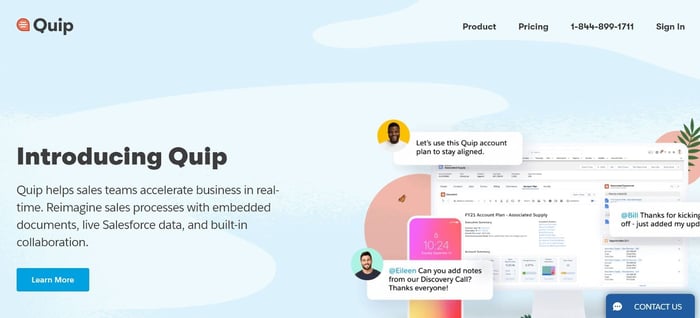
Best for: Document management
Notable customers: Amazon, Facebook, Amgen, Citi, 21st Century Fox, Cisco, Electronic Arts
Quip is a platform that transforms Salesforce processes. It standardizes, automates, and embeds real-time, collaborative documents inside Salesforce records. This tool lets people form groups and work together on spreadsheets. Quip is accessible from both desktop and mobile devices, so it’s great for employees on the go.
Key knowledge management features:
- Document creation
- Spreadsheet creation
- Templates
Pricing: Quip has three pricing categories, all billed annually
- Quip Starter – $10/user/month
- Quip Plus – $25/user/month
- Quip Advanced – $100/user/month
Elium
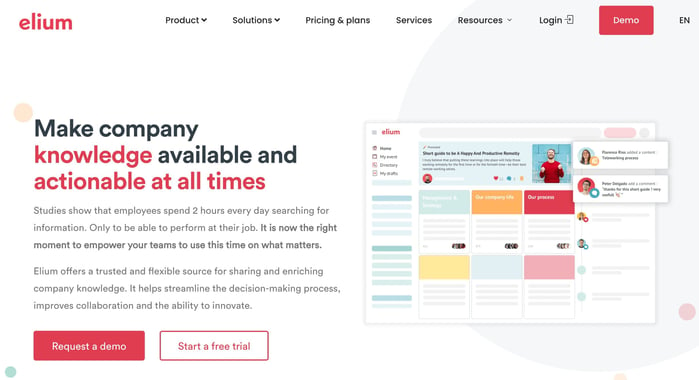
Best for: Knowledge base
Notable customers: L’Oréal, In Extenso, EURA NOVA, BVA, Le Groupe Groupama, Pepsol
Elium is a knowledge management tool that stores knowledge and helps organizations facilitate digital communication. Elium is both a mobile and desktop solution, designed to keep knowledge and conversations flowing in any work environment.
Key knowledge management features:
- Web bookmarking
- Document sharing
- Categories
- User directory
- Feedback services
Pricing: Elium has three pricing packages
- Team – $4.35/user/month
- Corporate – $8.70/user/month
- Enterprise pricing available upon request
FAQ
What is a knowledge management system?
Think of a knowledge management system as a virtual library that keeps your organization's valuable knowledge organized and accessible to everyone who needs it. It's a tool that helps teams capture and store their collective knowledge, best practices, and insights in one place. It makes it easy for employees to find and use this information to make better decisions, solve problems, and understand your product or services.
Why do businesses need a KMS?
A knowledge management system brings a number of benefits to businesses. It enables the effective capture and organization of collective knowledge, best practices, and lessons learned. This leads to improved decision-making, creative problem-solving, and helps to prevent information silos. A knowledge management tool also saves your employees time by making information easily accessible, prevents knowledge loss, and fosters continuous learning. It also promotes collaboration, maintains communication flow, and enhances organizational efficiency.
Some more specific benefits include:
- Reducing the cost of customer service by providing a self-service help platform
- Speeding up employee training and onboarding
- Centralizing all important information on one place
What are the different types of knowledge management solutions?
There are 4 main types of knowledge management solutions:
Document management systems
A document management system typically includes features such as document storage, version control, document retrieval, metadata management, and document collaboration. Document management systems are widely used to improve document organization, facilitate real-time collaboration, and enhance document security with access control. Examples include tools such as Microsoft Sharepoint and Google Drive.
Content management systems
A content management system (CMS) is a software platform that allows users to create, manage, and organize digital content such as text, images, videos, and documents in a structured and efficient manner. Most CMS platforms provide a user-friendly interface for creating, editing, and publishing content on websites, intranets, or other internal digital platforms without requiring technical coding skills.
Intranets
An intranet serves as a digital platform where employees can access and share information, collaborate on projects, communicate with each other, and access various tools and resources that are relevant to their work. An intranet can include features such as document sharing, team calendars, company news and announcements, employee directories, discussion forums, and other tools that facilitate communication, collaboration, and information sharing within the organization.
Wikis
A company wiki is a collaborative online platform that allows employees within a company to create, edit, and share content collectively. Similar to Wikipedia, it is typically used to create a centralized knowledge base or repository of information that can be accessed and updated by employees across the organization.
What’s the difference between a KMS and CMS?
A Knowledge Management System (KMS) is designed to capture, organize, and share knowledge and information within an organization, with a focus on promoting knowledge sharing and collaboration among employees. A Content Management System (CMS), on the other hand, is focused on managing different types of digital content (such as text, images, videos, and documents) for internal and external audiences on websites, blogs, or other digital platforms, providing tools for content creation, editing, organization, and publishing.
What is the main objective of a KMS?
The main goal of a Knowledge Management System is to share perspectives, ideas, experience, and information within an organization, making sure they are easily accessible when needed. This enables efficient knowledge sharing, informed decision-making, and improved organizational performance by reducing the time spent looking for information.
Simplify Knowledge Management With Happeo
Happeo’s knowledge management tool makes it easy for your organization to find, share and retain knowledge. It provides your people with a single source of truth and encourages them to collaborate effectively, as well as analyze and optimize your content. Click here to learn more.



 6-step knowledge management process for businesses in 2023
6-step knowledge management process for businesses in 2023 13 steps to create an effective knowledge management strategy
13 steps to create an effective knowledge management strategy